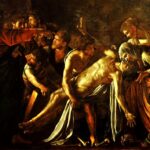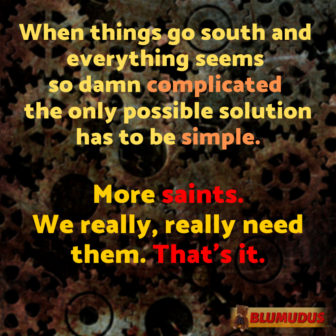Reflections on a tragedy.
August 14 in my mind was already associated to the image of a broken bridge. Don’t ask, it’s personal.
You may have heard how my hometown of Genoa was struck by a disaster: the collapse of a significant portion of the Morandi Bridge, a highway overpass 1200 meters long (3/4 of a mile) that meant a lot to us. Not just a vital thoroughfare necessary for traffic coming and going from, to and through the city, the port and the rest of the region.
A cumbersome acquaintance, a familiar sight, a piece of our lives. The intersection between beautiful and ugly. A source for apprehension.
So many victims, so many tragic stories.
Nowadays I don’t live near Genoa anymore; somehow this makes the whole experience feel even more surreal.
Maybe its’ just me, but almost every time I crossed that bridge I pictured the scene of the whole thing suddenly collapsing. We all crossed it innumerable times.
If there’s an almost irrational fear dwelling in your soul since you were a boy, the day that nightmare comes true is the day you don’t know whom you can trust anymore.
Yes, in a way we all expected something like that to happen.
Reinforced concrete used for traction, that was the bold idea behind the project that raised many eyebrows.
And yet your rational brain couldn’t believe this tragedy was even possible. Since the highway company Autostrade Spa communications were reassuring, one was left with the impression the aging of the concrete (causing a weakening of the structure) had to be not so extreme after all: “They must know what they are doing!”
Half a century ago the engineer behind the project, Riccardo Morandi, represented one of the champions of a new era of tumultuous development for the country. A booming economy accompanied by optimism and audacity. That’s the climate in which an experimental building technique like the one employed for this bridge could get the green light.
It was a mistake after all.
This tragedy represents a defeat for that brand of Italian achievement; also a failure for today’s Italy, a country that gradually lost the ability to build or even administer the existing infrastructure.
A focus on an allegedly desirable degrowth and a bureaucratic obsession with guaranteeing public safety brought about a painful economic decline accompanied by a visible loss of security.
The town of Genoa, the largest port in Italy and the entire region now face a permanent state of emergency, one that is expected to last for years: that bridge was really indispensable, both for local traffic between the east and west parts of the city, and for long distance trips, say from Tuscany to France.
A broken bridge happens to create a troublesome visual metaphor for our future.
Victims
Now it’s time to mourn those brothers and sisters (more than 30) who were crossing the bridge, focused on their daily activities or ready to board a ferry to their vacation destinations, not knowing that their life was going to end in mere seconds, after a 45 meters fall.
A time for prayer.
In search of the culprit
I was surprised by the way the representatives of Società Autostrade (the society operating the highway management concession) chose to deal with the crisis. Their tone deaf, dry and scarce communications suggest they’re unable to understand that in the eye of a public opinion lusting for some exemplary punishments they represented the obvious villain of the story.
Theirs was the responsibility to guarantee safety standards on the highway, monitoring the degradation of the bridge materials.
Was their maintenance program insufficient? Let’s say that, given the peculiar contract they signed with the State, it’s at the very least reasonable to doubt their conduct.
I’m not saying it’s easy to choose a proper management system for a natural monopoly; I don’t have a recipe as such. But we must stress how the avenue chosen by the Italian Left when they privatized the national highways represents the worst possible solution: no public tender, a secret long term contract containing minimal requirements plus a guaranteed -and large!- profit margin…
Since ANAS (the state entity responsible for road management) is formally a corporation, their contracts with Autostrade Spa and others were exempt from public disclosure… As if those contracts were involving privately owned businesses. This perversion illustrates the vicious nature of crony capitalism, where a formal privatization provides cover for opaque deals that have no relationship whatsoever with the concept of free market.
From what I could gather, Società Autostrade Spa has the right to increase the toll fares in proportion to the expenses incurred, which is convenient, especially if the controls on the actual amounts spent, the results and standards achieved are lax or nonexistent.
That explains the curious phenomenon of the never ending roadworks: any excuse will do to perform some light maintenance, including for example frequent roadside grass cutting or painting tunnels white from time to time.
When their representatives seem even more eager than the public to install noise absorbing barriers all across town, this begs the question: evidently the higher the expenditure, the higher the profit.
In a sense we cannot point the finger to a lack of maintenance programs for the tragic collapse of our concrete monster.
The issue is subtler. They weren’t itching to perform those maintenance interventions that required more effort and time, thus closing the road for prolonged periods.
What manager could realistically take the initiative to close Morandi Bridge for months or years, thus splitting a major town in two?
Better kick the can down the road.
The bridge had 3 pylons; one was reinforced in the 90s, for the other 2 (one of which collapsed) a public tender was underway.
The true cause of the collapse
The overarching issue behind this tragedy was represented by a couple of thoughts that no one dared to express and often even think.
I got to know the Autostrade experts, I saw how they roll.
Even if a proximal cause may eventually be found, one more apt for the front pages, here’s the thinking that got us here.
1. It’s unthinkable to close down the bridge. It should remain open, one way or another: it’s a strategic resource that cannot be replaced.
2. Morandi was a genius, this bridge is an engineering masterpiece that was published on prestigious journals and textbooks: you can’t possibly commit the sacrilege of questioning its value.
Whenever one doesn’t want to admit there could be a problem, often even to oneself, since the whole possibility is considered unacceptable… well, that’s when one fails to notice the problem.
Even on the eve of the tragedy, during a special broadcast on national TV discussing the crisis, the voice of the experts was represented by an insufferable engineer who insisted on point #2…
Sometimes the most reasonable explanation is also the correct one.










































